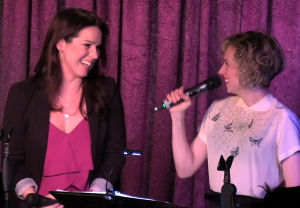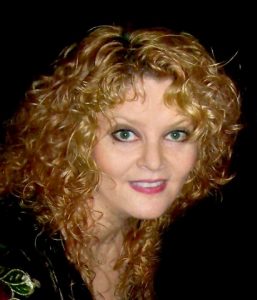Bistro Bits: January Discoveries Get the New Cabaret Year Going
At the start of a new calendar year, are we—subliminally, maybe—more open to new ideas and fresh ways of doing things?
I saw several cabaret shows this January. What links the three shows I’m writing about today is that each one involves a discovery of something fresh, innovative, and full of promise. Maybe I wouldn’t have noticed this pattern if I’d seen these shows in summer or fall, when I was not in a January mindset. In any case, it’s great to have these kinds of eye-openings this early in the new year.
I discovered a young cabaret artist—one I’d never before heard of, who’s making his way into our midst while excavating the musical past: I experienced a new series of shows that may bring the realm of theatre and the world of cabaret closer together—in an off-the-beaten-path time slot. And I became aware of a performance space that offers cabaret artists a different kind of performance model.
Here are the deets….
The Bryce Edwards Frivolity Hour at Birdland
Finding out about Bryce Edwards is something like discovering an Ivory-Billed Woodpecker who’s flapped his way out of extinction and turned up rapping on your front door one morning—cocking his head as if to ask, “Say, why’s everybody so surprised to see me?”
With his angular features and a shock of hair cascading toward his face like showy plumage, Edwards truly is a rare bird. His vocal style, influenced by early-twentieth-century pop/jazz singers like Cliff Edwards and Rudy Vallée, is somehow both nasal and raspy, perfect for a repertoire of material from the 1920s and vicinity. He sounds like your great-grandparents’ oldest, dustiest 78 rpm record, rescued from an attic. (In a good way.)
At his recent Birdland show, The Bryce Edwards Frivolity Hour, the singer/musician performed for a large, enthusiastic audience. His patter was snappy (and informative), and his singing voice full of wah-wah cheekiness, sometimes leaping up to falsetto range for some spirited measures of yodel. (“I like to do a lot of weird stuff onstage,” he confessed at one point.)
The setlist included some familiar songs (“Let’s Misbehave,” “Whispering”), plus a slew of more-esoteric titles. Playing ukulele, banjo, mandolin, and an array of other instruments with suave command, he was a virtual one-man band, though he was supported by a quartet of other fine musicians. Edwards’ best gal, Reilly Wilmet, joined him on a few numbers, including a deeply satisfying “Shine On, Harvest Moon.” I found the whole evening highly entertaining—a strangely moving musical journey back in time. If this is a novelty act, may the novelty never wear off. (1/22)
Between Broadway Variety Hour at Don’t Tell Mama
A new series from producer Bill DeSimone, the Between Broadway Variety Hour is an informal showcase for show folk, wedged between Saturday matinee and evening theatrical performances—in other words, during the dinner hour. (It’s scheduled for 5:30, although the festivities at the third installment of the show got underway closer to 6.)
Hosting the show was the frenetic Sarah Ziegler Blair. Dave Christensen was her sidekick. The calm-and-composed Eli Schildkraut was at the piano, smiling a droll smile. At this particular installment, four guest performers were featured: Matthew Mucha (Harmony), Chilina Kennedy (Beautiful), Sami DeVries, and Marianna Blum. Each of them sang a number and was playfully interviewed by Blair for several minutes. There were also games, tailored to the performers’ résumés. Mucha, for instance, participated in a quiz called “Berry or Barry?” (as in Harmony’s Manilow), at which I was reminded that, technically, grapes and avocados are both “berries” (and not Barrys).
Between Broadway is a carefree, not-especially-polished trifle, an experience probably best enjoyed with a well-poured cocktail and some eats.
Not everything worked perfectly at the episode I saw. A recurring comedic bit about a failing New Year’s resolution could have used some sharper laugh lines. But, by and large, I liked the production’s uncomplicated fun.
A show like this one can provide a good experience for theatre-trained singers who would like to experiment with a cabaret turn. My pieces of advice for them? (1) It’s a small room, you’re miked, and there are no balcony rafters to reach, so no need to blast the money notes to kingdom come; (2) Don’t be afraid to break the fourth wall during a song.
The next episode in the series is scheduled for March 9. (1/20)
Sheree Sano at the Salmagundi Club
I’ve heard and enjoyed the singing and playing of Sheree Sano on occasion. But she has often been found in piano-bar engagements, where she had to contend with distracted (not to mention inebriated) audiences, sometimes more interested in chatting with (or, in the worst of times, hollering at) one another than in concentrating on her music. So, what a pleasant departure to hear her at the Salmagundi Club, near Washington Square Park, in a program of Cole Porter songs. In the Salmagundi’s Skylight gallery, all ears were tuned attentively to her as she played and told the story of Porter’s life and career, illustrating it with some of the songwriter’s compositions.
I know the ups and downs of the Porter story pretty well, but it was lovely to hear the riches-to-riches saga from a relaxed and thoughtful Sano, as she clearly has a deep affinity for the man and his music. She spoke about how Porter coped with his devastating equestrian accident and the many surgeries that followed. She put a positive spin on his marriage to Linda Lee Thomas, focusing on the abiding affection between the pair, rather than on their mismatched sexualities. She took a kind of minimalist approach to the songs (which included “De-Lovely,” “Begin the Beguine,” and “So in Love”). She didn’t repeat refrains, include obscure third or fourth verses, or choose a lot of “list” songs, such as “Let’s Do It, Let’s Fall in Love,” whose tendency to go on and on seems at times to be their main interest. Many of the selections in this show lasted only a couple of minutes. It seemed that we savored them all the more for their brevity.
This new-to-me program was part of the First Wednesday “Coffee Club” shows at Salmagundi. The series is curated by singer/pianist Nancy Winston. Since Sano’s show, I’ve learned of another cabaret performer who has booked a First Wednesday show in the Skylight gallery. Such events may well be a 2024 cabaret trend.
Info on “Coffee Club” shows can be found on the Salmagundi website.
That night, Sano mentioned to me and my companions that she liked the concert mode for performers at Salmagundi, in part because listeners aren’t hurried out of the room to make way for someone else’s show. The event was free, but dinner was served downstairs (for a price) after the performance, and, indeed, it was a nice change to be able to chat with people in a spacious room, post-show, instead of while standing in a line near the clogged exit door of a cabaret showroom or shivering out on the sidewalk. This model, and that of similar shows at places like the Players Club, won’t replace regular commercial-club performances—nor should it. But it’s a good thing to have in the mix. (1/3)
In Passing
The cabaret community in New York City lost a precious gem on January 6 with the passing of Sarah Rice. She’d been a regular presence in cabaret for decades, though she will probably be best remembered for her musical theatre credits—especially for originating the role of Johanna in the 1979 premiere of Stephen Sondheim and Hugh Wheeler’s Sweeney Todd.
Rice was honored throughout her career with both MAC and Bistro awards. She was presented with two Bistros. The first came in 2010 for her solo show, SCREEN GEMS: Songs of Old Hollywood. The second was eight years later, when she was honored (along with Carole Demas, Charles Repole, Joe Goodrich, Maria Banks, and Stuart J. Allyn) for Thank You for Your Love: Our Celebration of Tom Jones and Harvey Schmidt. (One of her best-remembered roles had been a years-long stint as Luisa in the long-running Off-Broadway production of Jones and Schmidt’s The Fantasticks.)
Carole Demas responded to my request for some words about her friend and collaborator:
When she sang “Green Finch and Linnet Bird,” which she introduced to the world in…Sweeney Todd, the song pulsed and soared with longing, every time. Then she’d turn around and have you roaring with laughter at her rendition of some naughty old music hall tune….
I miss her generosity, her impish humor, her artistic inspiration, her grit and faith in possibilities…. She was unforgettable. I am grateful.
Stuart Allyn, Demas’s husband and the producer, sound engineer, and projection designer of Thank You for Your Love, added his own memories:
Working with her was always joyful and uplifting. Her soaring voice [was] always glorious and her musical choices always fascinating and inspired.
Rest in peace, Sarah Rice. You will be dearly missed.
About the Author
Mark Dundas Wood is an arts/entertainment journalist and dramaturg. He began writing reviews for BistroAwards.com in 2011. More recently he has contributed "Cabaret Setlist" articles about cabaret repertoire. Other reviews and articles have appeared in theaterscene.net and clydefitchreport.com, as well as in American Theatre and Back Stage. As a dramaturg, he has worked with New Professional Theatre and the New York Musical Theatre Festival. He is currently literary manager for Broad Horizons Theatre Company.








